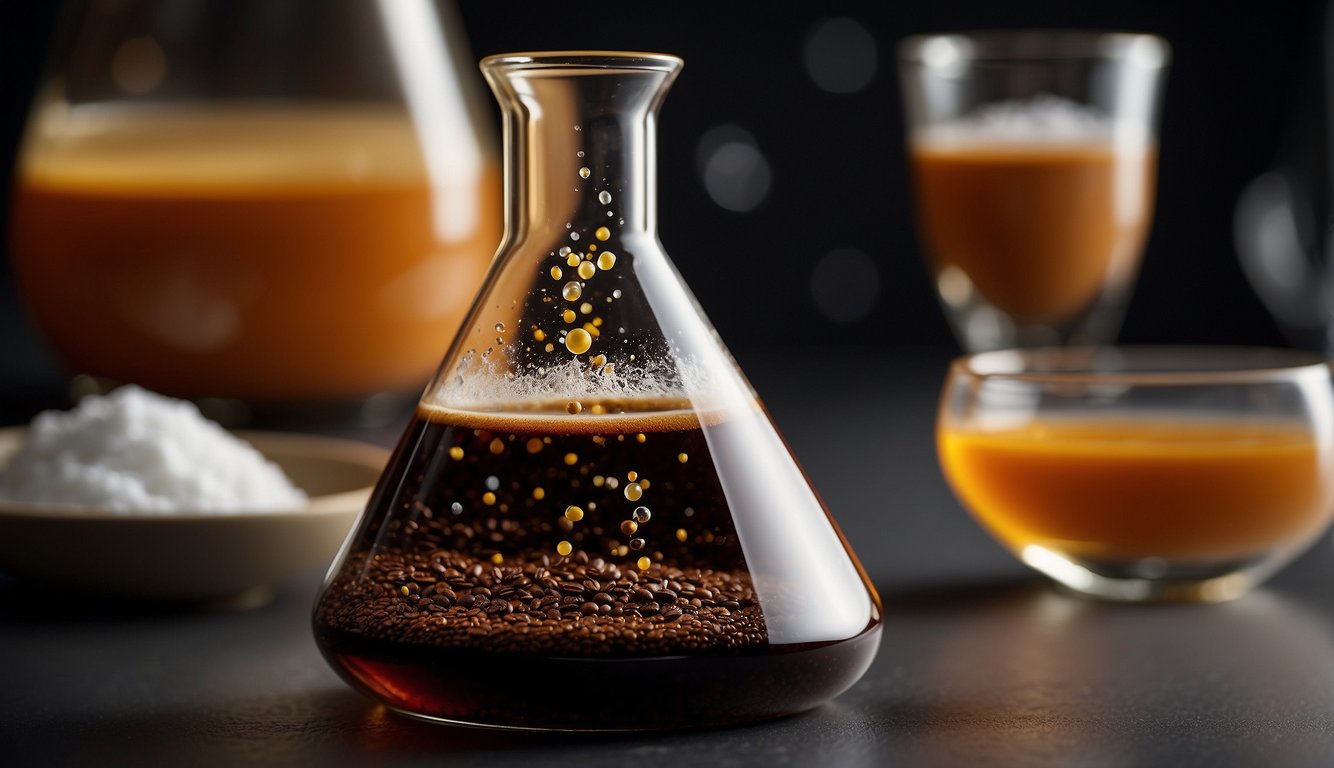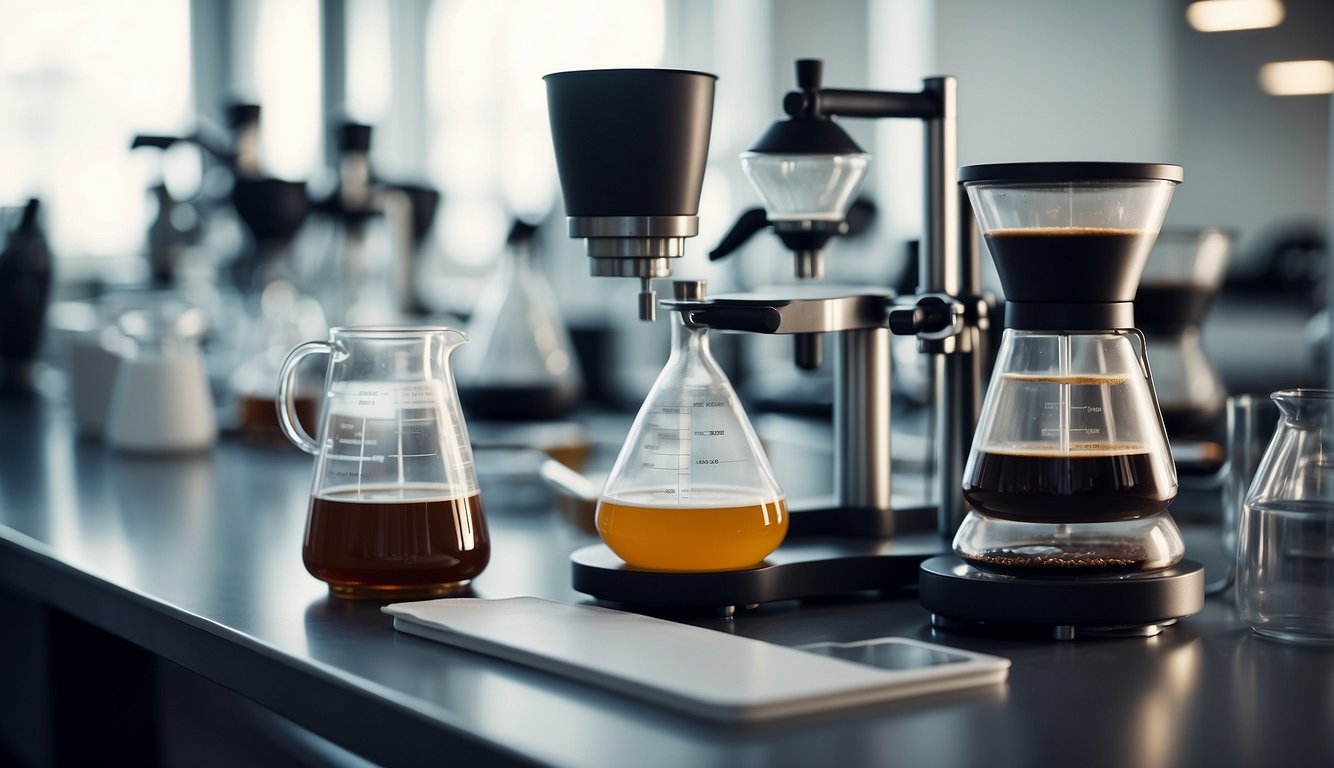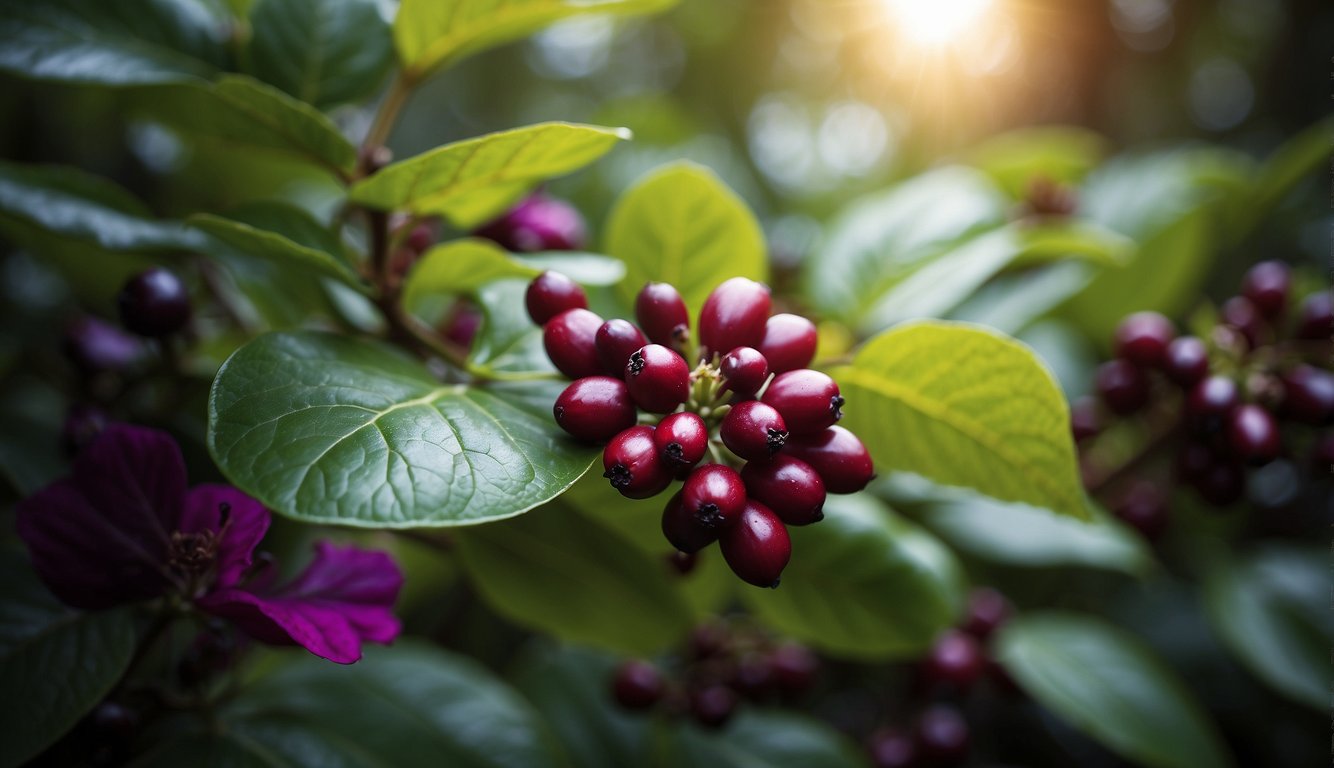Coffee is a popular beverage enjoyed by people across the globe, not only for its stimulating effects but also for its health contributory components. Among these beneficial constituents are antioxidants and flavonoids, which are compounds found in various foods and drinks, including coffee. These substances play a significant role in the body’s defense system against free radicals, which are molecules that can damage cells and contribute to aging and diseases.

Antioxidants in coffee, such as chlorogenic acids, are known for their ability to neutralize harmful free radicals. The flavonoids present also contribute to the overall antioxidant capacity of coffee. These elements in coffee have drawn attention for their potential health benefits, which range from reducing the risk of certain diseases to enhancing overall health.
The levels of antioxidants and flavonoids in coffee can be affected by various factors, including the method of coffee production, the type of coffee bean, and how the coffee is prepared. While moderate coffee consumption is generally considered safe for most people, it is essential to understand how these compounds behave and the factors affecting their presence in our daily cup of coffee.
Key Takeaways
- Coffee contains beneficial compounds like antioxidants and flavonoids.
- These compounds can protect cells from damage and may offer health benefits.
- Production and preparation methods affect levels of these compounds in coffee.
Chemistry of Coffee Antioxidants

Coffee is a complex chemical mixture. This section explores the antioxidants within coffee, their types, and how roasting impacts their levels.
Source and Composition
Coffee antioxidants come from the compounds in coffee beans. The composition of coffee antioxidants includes polyphenols and hydrocinnamic acids. These are responsible for many health benefits.
Types of Antioxidants in Coffee
There are several types of antioxidants found in coffee. The most notable are chlorogenic acids (CGAs), which are a group of phenolic compounds. Coffee also has a significant amount of quercetin derivatives and flavonoids. These contribute to coffee’s antioxidant properties.
Role of Roasting on Antioxidant Levels
Roasting affects the levels of antioxidants in coffee. The process changes the concentration of certain compounds. For instance, light roasting can preserve more chlorogenic acid compared to dark roasting. However, it may also produce unique antioxidants.
Health Benefits of Coffee Antioxidants

Coffee is more than just a wake-up call. It contains antioxidants that contribute significantly to health.
Reducing Oxidative Stress
Antioxidants in coffee combat oxidative stress, the damage to cells caused by free radicals. These unstable molecules are linked to aging and various health issues. Drinking coffee provides antioxidants that neutralize these harmful compounds.
Prevention of Chronic Diseases
Regular coffee consumption is linked to a lower risk of chronic diseases such as certain types of cancer and Type 2 diabetes. Studies suggest that the antioxidants in coffee may be protective against these conditions.
Enhancing Cognitive Functions
The caffeine and antioxidants found in coffee boost brain function. Regular drinkers may see improved memory, mood, and alertness. They may also have a lower chance of developing neurodegenerative diseases.
Improvements in Metabolic Health
Coffee antioxidants help regulate blood sugar and reduce inflammation. This can lead to enhanced metabolic health and a lower risk of metabolic syndrome. They can also support healthy liver function, which is vital for metabolism.
Flavonoids in Coffee

The coffee bean contains flavonoids, which are a group of natural substances with variable phenolic structures. These compounds are known for their health benefits.
Major Flavonoids Present
Coffee is a source of several flavonoids, including quercetin, kaempferol, and myricetin. These substances contribute to coffee’s overall antioxidant capacity.
Impact of Flavonoids on Health
Flavonoids in coffee may help in reducing inflammation and supporting heart health. Regular consumption can contribute to a healthier lifestyle.
Interaction With Other Coffee Compounds
Flavonoids interact with other compounds in coffee, like caffeine. Together, they may enhance the antioxidant effects of each other. This synergy can be beneficial to the body.
Extraction and Quantification Methods

The extraction and quantification of antioxidants from coffee demand precise techniques. These methods ensure the accurate measurement of antioxidant levels.
Techniques for Antioxidant Extraction
Different methods are used to extract antioxidants from coffee. One popular approach is using solvents like water and ethanol. The mixture of water and ethanol can be especially effective, as highlighted in a study on coffee husk extracts. Time and temperature also play vital roles in the extraction process. Choosing the right conditions can maximize the yield of bioactive compounds.
Assessment of Antioxidant Capacity
Once extracted, it’s essential to evaluate the antioxidant capacity of coffee. This can be achieved through various assays. For example, the chromatographic methods coupled with chemometric analyses are utilized to identify and quantify polyphenols in spent coffee grounds. These values can help determine the free radical scavenging ability of the coffee extracts. It is a measure of how effective the antioxidants are at neutralizing harmful molecules.
Factors Influencing Antioxidant Levels

Antioxidant levels in coffee can vary a great deal. This variation is due to several key factors.
Effect of Coffee Bean Variety
Different types of coffee beans naturally contain varying antioxidant properties. For instance, Robusta beans generally have higher antioxidant content than Arabica. Research shows that the antioxidant power of coffee relates directly to the type of bean used.
Influence of Growing Conditions
The environment where coffee is grown can affect its antioxidant levels. Soil quality, altitude, and climate play crucial roles. Beans grown at high altitudes in volcanic soil, like those from Ethiopia, often feature a richer antioxidant profile.
Post-Harvest Processing Effects
How coffee beans are treated after harvesting also impacts their antioxidants. Dry processing tends to preserve more antioxidants than wet processing. The medium-roasted beans yield the highest antioxidant effect compared to light and dark roasts.
Consumption Patterns

Understanding how often and in what ways people consume coffee can affect the intake of antioxidants and flavonoids.
Daily Intake Recommendations
Health experts have not set a specific recommendation for the intake of antioxidants from coffee. However, most agree that moderate coffee consumption, typically 3 to 4 cups per day, can be part of a healthy diet. This amount often provides significant antioxidants without excessive caffeine.
Variations in Coffee Preparation
The method of preparing coffee can affect its antioxidant levels. For instance, filter coffee generally has fewer antioxidants than espresso or French press options. This is because filtration can remove some compounds. The choice of beans also impacts antioxidant levels, with darker roasts having slightly less than lighter ones.
Regulatory Aspects and Labels

In the realm of coffee products, both the presence of antioxidants and how they’re presented on labels are strictly governed. Producers must adhere to established guidelines to make accurate claims.
Guidelines for Antioxidant Claims
Heath-related claims on coffee labels are monitored by regulatory bodies. They ensure that any mention of antioxidants in coffee aligns with scientific evidence. Producers must not imply exaggerated health benefits.
Consumer Labelling and Education
Labels must be clear and informative to help consumers understand the contents. They should include details about antioxidants and flavonoids. This transparency aids consumers in making informed choices.
Frequently Asked Questions

This section answers common questions about the antioxidants and flavonoids found in coffee, their health effects, and how they compare to other sources.
What are the health benefits associated with the antioxidants found in coffee?
Antioxidants in coffee can reduce inflammation and protect against some diseases. Regular consumption has been linked with a lower risk of several chronic conditions.
Which types of coffee are known for having the highest concentration of antioxidants and flavonoids?
Espresso and coffee made from lightly roasted beans have more antioxidants and flavonoids. The darker roasts contain less of these beneficial compounds.
How do the flavonoid levels in coffee compare to those found in tea?
Tea generally has higher levels of flavonoids than coffee. However, the total antioxidant intake can be similar due to the larger volume of coffee consumed.
In what ways can the antioxidants present in coffee affect skin health?
The antioxidants in coffee can protect the skin from damage. They help by fighting free radicals that can lead to wrinkles and sun spots.
Are the antioxidants and flavonoids retained in decaffeinated coffee varieties?
Decaffeinated coffee still contains antioxidants and flavonoids. The decaffeination process does remove some, but many beneficial compounds remain.
How do the polyphenol content and the antioxidant benefits of coffee compare to those of blueberries?
Blueberries have higher polyphenol content compared to coffee, but coffee is consumed more frequently. This makes coffee a significant source of antioxidants in the diet.
